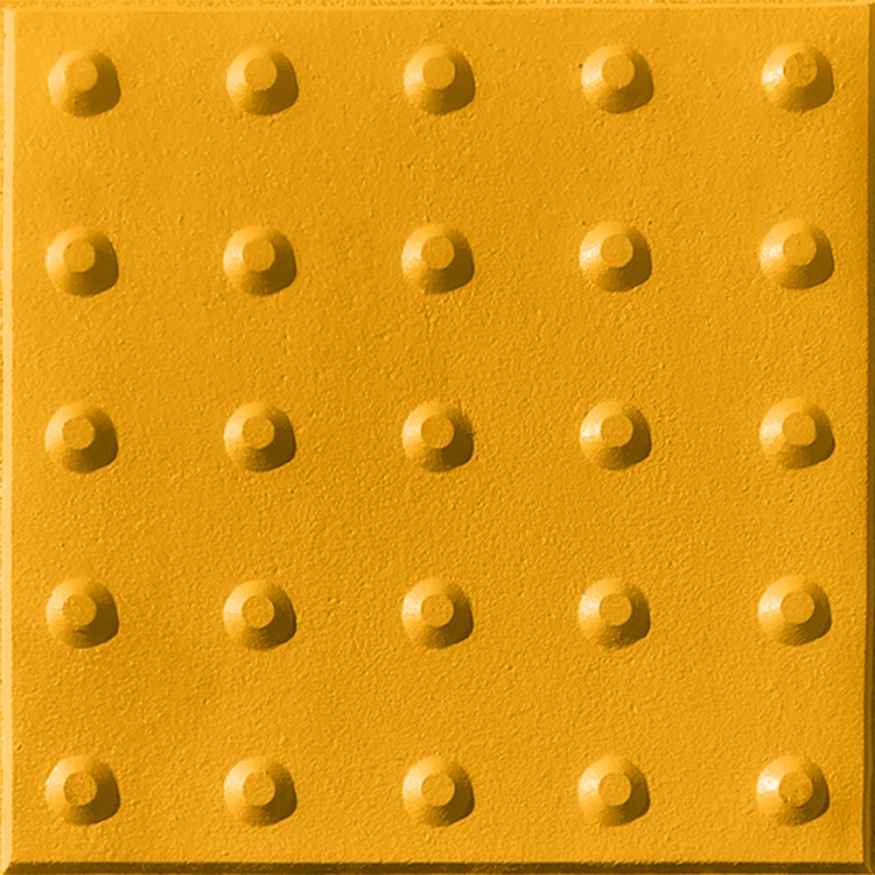Truncated domes, also known as detectable warning surfaces or tactile paving, are a type of pavement surface feature designed to help visually impaired individuals navigate pedestrian crossings and other areas with potential hazards. These raised, textured surfaces are typically made of cast iron, ceramic, or rubber and are found in a variety of locations, including at the edges of sidewalks, at bus stops, and at the bottoms of stairs. Truncated domes are typically placed in a pattern that forms a tactile walking surface, providing a distinct and detectable warning to visually impaired individuals that they are approaching a hazardous area.
The History of Truncated Domes
Truncated domes have a long and fascinating history. The concept of tactile paving can be traced back to ancient Rome, where small stones were used to create textured surfaces to guide pedestrians through the city. In the modern era, the first truncated domes were developed in the 1960s in Japan as a way to improve safety for visually impaired individuals in public spaces. These early truncated domes were made of concrete and were placed in a straight line along the edge of a sidewalk to indicate the presence of a drop-off or other hazard.
The use of truncated domes quickly spread around the world, and by the 1980s, they were being used in a variety of locations in the United States and other countries. Today, truncated domes are an integral part of the built environment in many cities and towns, helping to improve the safety and accessibility of public spaces for all individuals, regardless of their ability to see.
Types of Truncated Domes
There are several different types of truncated domes available on the market today, each designed for specific types of applications. Some of the most common types of truncated domes include:
- Standard Truncated Domes: These are the most common type of truncated dome and are typically used in pedestrian crossings and other areas with vehicular traffic. Standard truncated domes are typically made of cast iron or ceramic and are placed in a straight line along the edge of a sidewalk or other walking surface to indicate the presence of a drop-off or other hazard.
- Mini Truncated Domes: Mini truncated domes are smaller versions of standard truncated domes and are typically used in areas with less vehicular traffic or where space is limited. Mini truncated domes are typically made of rubber or similar material and are placed in a straight line along the edge of a sidewalk or other walking surface to indicate the presence of a drop-off or other hazard.
- Blister Truncated Domes: Blister truncated domes are raised, dome-shaped truncated domes that are typically used in areas with less vehicular traffic or where space is limited. These truncated domes are typically made of rubber or similar material and are placed in a pattern that forms a tactile walking surface.
- Braille Truncated Domes: Braille truncated domes are a type of truncated dome that is designed specifically for use by individuals who are blind or visually impaired. These truncated domes are typically made of cast iron or ceramic and are embossed with raised Braille characters to provide information about the surrounding area.
The Benefits of Truncated Domes
Truncated domes provide a number of benefits for visually impaired individuals and the communities in which they live. Some of the key benefits of truncated domes include:
- Improved Safety: Truncated domes help to improve the safety of pedestrian crossings and other areas with potential hazards by providing a detectable warning to visually impaired individuals. They also provide a warning to motorists that there may be pedestrians in the area.
- Improved Accessibility: Truncated domes can be used to help visually impaired individuals navigate their communities, as they are typically placed at intersections and other areas where two or more streets meet.

